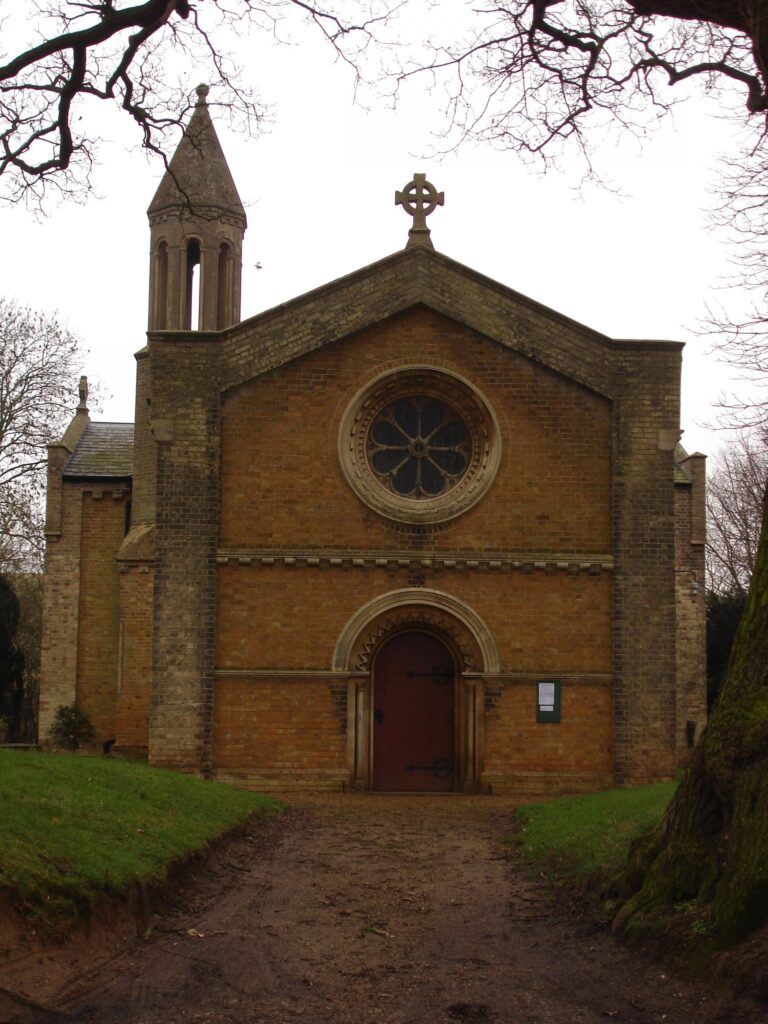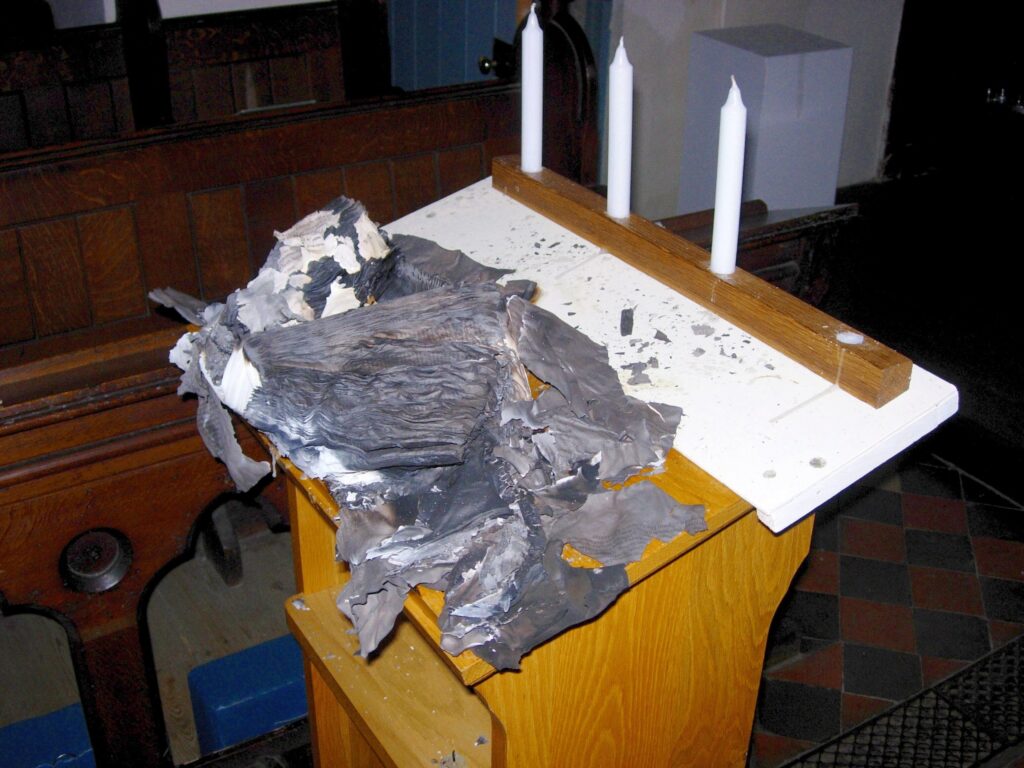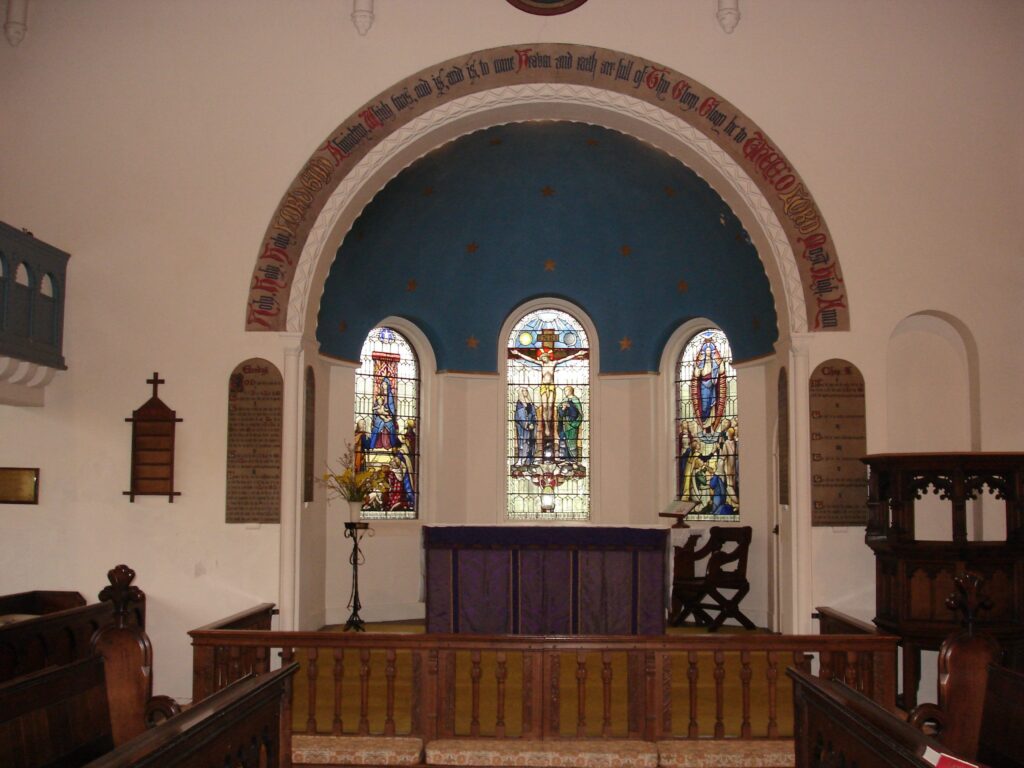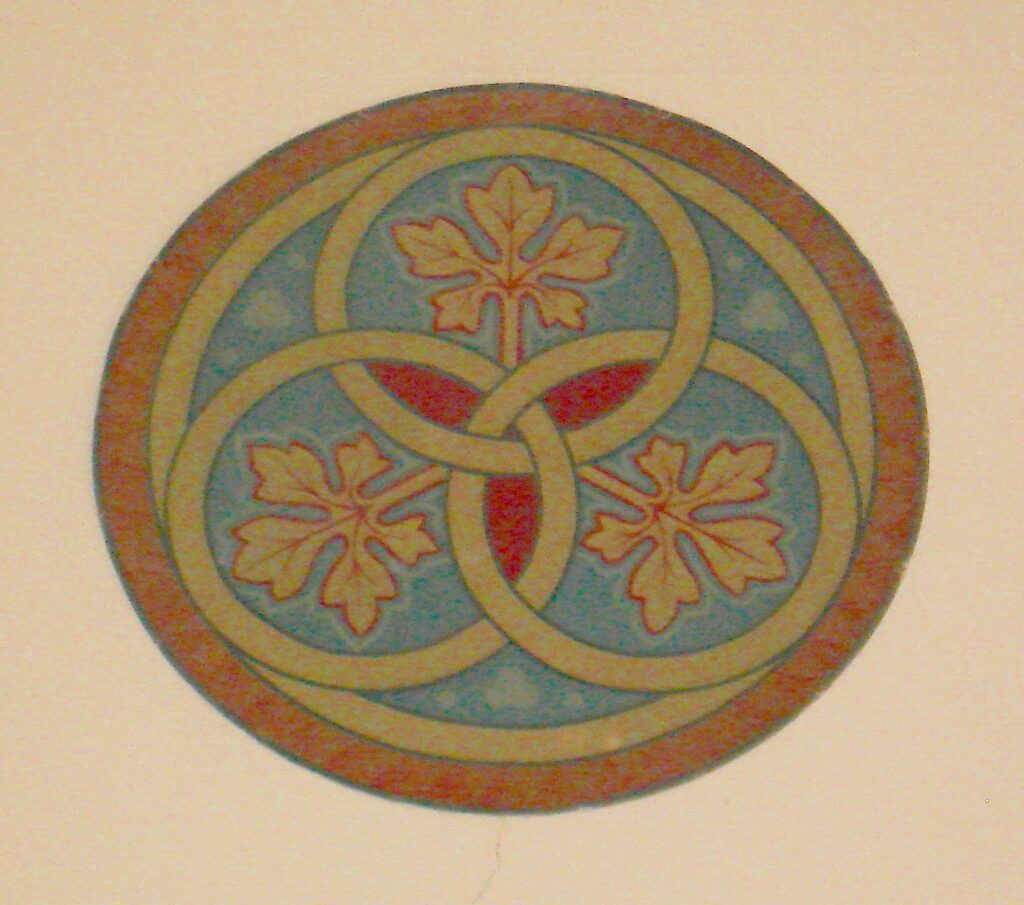Construction work began on Wareside church building in 1840, under the direction of the controversial Vicar of Ware, Henry Coddington, whose brass memorial can be seen in the floor in front of the communion rail. Originally built as a chapel-of-ease for the inhabitants of the Ware Uplands, it was designed by Thomas Smith of Hertford on instructions given by Coddington who was keen to see that the building mirrored the early Roman churches. Coddington’s approach to liturgy and other aspects of divine service were branded by some as “Popish” (he was a staunch supporter of the “Oxford Movement”) and his Tory politics were also different to the prevailing attitudes in Ware. Until Coddington, the town had enjoyed a long-established low-church tradition and the meeting of the two extremes was uncomfortable at best (perhaps particularly for Coddington!). Nonetheless, the ritual expression of faith remained a matter of serious importance to him, and the design of the new building reflected his eagerness to unite architecture with ritual. (See “Interesting Features” below.)

It was consecrated by the Bishop of London on 2nd September 1841 with a service attended by 650 people, some of whom had to stand outside. In its original design, there were 500 “sittings,” including a west gallery which was removed in the 1860s amidst re-ordering which reduced the seating capacity by 100. A plaque over the door still proudly proclaims that 440 of the 500 sittings are “free and unappropriated,” which, for an era where churches often charged pew-rent, was both remarkably forward thinking in its welcome to all-comers, and clear recognition of the poverty of the area the building would serve. The church today still warmly welcomes anyone, irrespective of the contents of their bank balance!
Successive church communities have made a small number of constructive changes to the building which include the installation of central heating in the late 1880s, but the building has also suffered damage at the hands of people intent only on destruction. During the war, some of the original windows were destroyed and the cross which topped the bell tower fell off during an air raid. The windows were replaced, one in plain glass, and the other three – in the sanctuary – now together tell the story of Christ’s earthly life. The cross on the tower has never been replaced. Over the years, a number of the tiny leaded window panes have been smashed by children either kicking footballs or throwing stones.
In 2006, church members turned up to decorate the building ready for the Advent Service of Light to discover the vandals had been at work. Clerical garments and Bibles had been stolen, a prayer book ripped up, and a Bible sat smouldering over the small flame of a carefully positioned candle on the lectern shelf.
It is the hope of the present church community that the building will continue to stand against the destructive forces in our society even as the gospel of Jesus stands as the remedy for all evil. We trust the building will continue to be used to glorify God for many years to come.

Interesting features
The font was originally positioned in the centre of the nave, though we cannot be entirely sure where. It was moved in the early 20th century to its current position by the door; a position which is more theologically appropriate for this piece of furniture. Where it is now serves to remind us that just as we all enter the church building by the door, so we all enter the church of God by baptism.
The sanctuary is reached through a semi-circular archway adorned with various texts and symbolic reminders of the Christian faith. Facing the congregation on the walls are the words of the Ten Commandments, and facing each other across the sanctuary are stone tablets bearing the words of the Lord’s Prayer and the Apostles’ Creed.

Around the arch are the words of some scriptural songs of praise beginning with the song of the angels in Revelation 4. The full text reads “Holy, holy, holy, Lord God Almighty, Which was, and is and is to come, heaven and earth are full of Thy glory, glory be to Thee, O Lord Most High.”
The ceiling of the sanctuary itself is painted with stars in the night sky, a visual reminder of the heavens declaring the glory of God (Psalm 19). And above the arch, and therefore above the heavens, is an image which clearly represents the Triune Godhead, with three interlocking circles encompassed within a still larger circle.

The stained glass windows all depict different parts of the life of Christ. Interestingly, the adoration of the Magi appears as the central feature of two of the windows. The three windows behind the communion table celebrate the life of Christ from his incarnation to his ascension, with the central feature being the crucifixion. As Christ hangs upon the cross, he is flanked by his mother and the beloved disciple as in John’s gospel. Mary is also present in both of the other windows – first, seemingly seated upon a throne of her own with the infant Jesus on her lap, then kneeling with the other disciples who watch as the risen Lord Jesus returns to his Father in heaven.
And so to the kneelers, or hassocks. A project was begun in 1988 to renew the hassocks with the result that each hassock now in the church has been hand-made by local people and each one represents a birth, a baptism, a wedding or a funeral. The stories of the lives, loves and cares of the people of Wareside are quite literally woven into the fabric of the building reminding us all of our connectedness to the past.
On the wall in the vicar’s vestry is a comprehensive Rogues’ Gallery of clergy which is instructive about both the quality of photographic equipment down the ages and the cultural expectations upon clergy to be men of sobriety!
Today, the church building is used twice monthly for worship, and it is the hope of the congregation that it will stand as a living witness to the Lord Jesus for as long as the world endures; may His name be praised forever.
With gratitude to Jane Webb,
former parishioner and church member,
author of “Wareside: A Miscellany of Histories”
(Published in 2000 by The Rockingham Press)
from which much of this information is drawn.